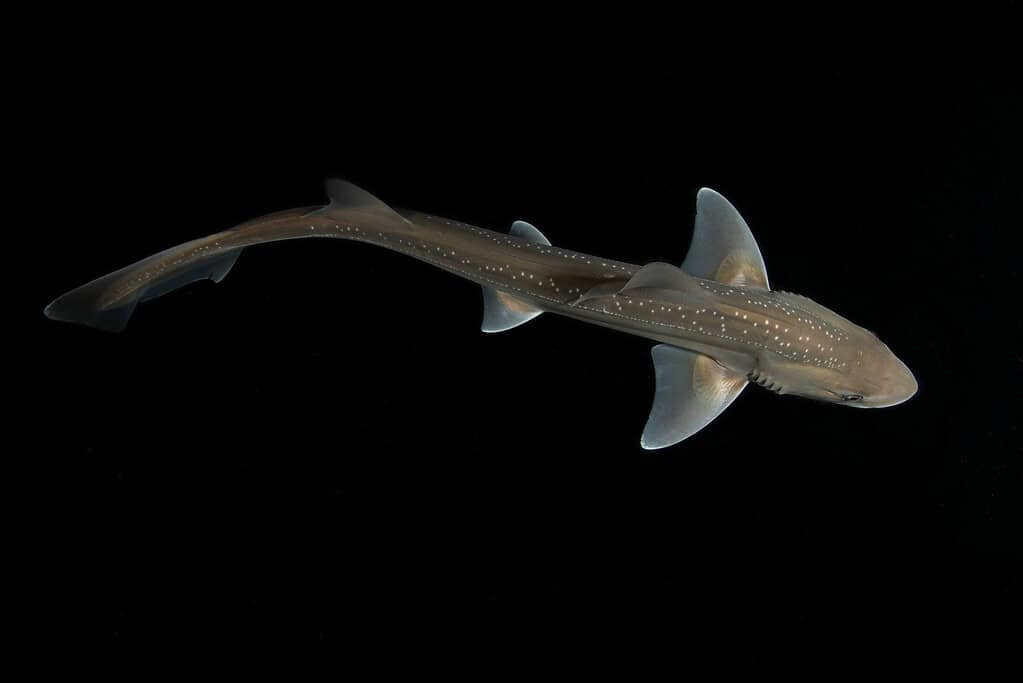
For centuries, sharks have patrolled the oceans as silent phantoms—seen, feared, but never heard. But in a small tank in New Zealand, one of them clicked.
The spotted estuary smoothhound, or “rig shark”, a modest little shark with mosaic teeth and a fondness for crustaceans, shattered oe of marine biology’s long-held assumptions with a burst of unexpected sound. This new evidence, published in Royal Society Open Science, suggests that a shark’s acoustic repertoire may be more complex.
Sharks are not silent
In a series of lab observations, juvenile rigs were moved from their holding tanks into experimental enclosures for standard hearing tests. Using a hydrophone—an underwater microphone—the team captured a series of loud, broadband clicks, each synchronized with the shark flexing its body.
Careful analysis confirmed that the clicks originated from the sharks themselves, with some reaching up to 156 decibels, measured at 30 centimeters from the source. Most of the energy was concentrated in the 2 to 18 kilohertz range, which ironically exceeds the sharks’ own hearing ability.
Rig shark snapping teeth together:
So why make a sound they can’t hear?
That’s what intrigued the researchers. One possibility is that the clicks serve as a startling defense mechanism, audible to would-be predators like larger fish. In other fish species, sudden percussive sounds are known to disorient attackers or signal distress.
Alternatively, the noise could simply be a stress-induced byproduct of the shark’s jaw movements. Rays, which are close relatives of sharks and part of the elasmobranch family, have been shown to produce clicks by clapping their flattened teeth together when disturbed. Rig sharks have a similar dental setup—mosaic-patterned teeth adapted for crushing crustaceans—potentially allowing for the same kind of sound generation.
A quick series of tests with a related species called the dusky smooth-hound failed to produce any clicking behavior, demonstrating that it could be possible not all hound sharks share this trait.
The big question now: do rigs click in the wild? And if so, when?
Future research will explore whether this behavior occurs naturally—perhaps during predator encounters or social interactions—and whether other shark species with similar tooth structures also produce sounds. For now, the rig shark stands alone as the first confirmed clicking shark, but it might just be the start of a much noisier story beneath the waves.









